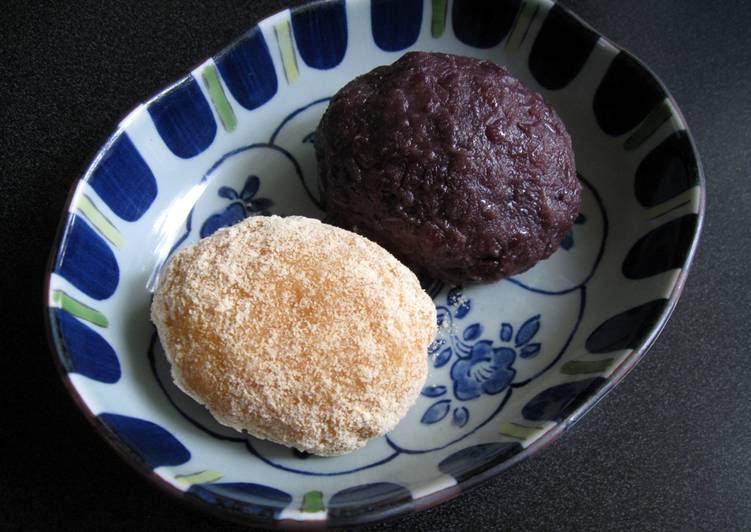Ohagi (Bota Mochi). Ohagi, or botamochi, are sweet rice balls which are usually made with glutinous rice. They are commonly eaten during higan periods in spring and autumn, a Buddhist holiday celebrated by Japanese sects during both equinoxes. The name, ohagi, came from the autumn flower, hagi (bush clover).
 Today, I'll share little cultural tidbits of this traditional sweet along with the recipe!
A very similar sweet, ohagi (おはぎ), uses a slightly different texture of azuki paste but is otherwise almost identical.
We are making Japanese autumn dessert, Ohagi also known as Botamochi in spring.
You can have Ohagi (Bota Mochi) using 5 ingredients and 7 steps. Here is how you achieve that.
Today, I'll share little cultural tidbits of this traditional sweet along with the recipe!
A very similar sweet, ohagi (おはぎ), uses a slightly different texture of azuki paste but is otherwise almost identical.
We are making Japanese autumn dessert, Ohagi also known as Botamochi in spring.
You can have Ohagi (Bota Mochi) using 5 ingredients and 7 steps. Here is how you achieve that.
Ingredients of Ohagi (Bota Mochi)
- You need 2 cups of (*180ml cup) Glutenous Short Grain Rice.
- Prepare of *Note: You can replace 1/2 cup (90ml) of it with regular Short Grain Rice.
- It's 1 pinch of Salt.
- It's of Sweet Azuki Paste *Tsubu-an OR Koshi-an.
- It's of Kinako (finely ground Roasted Soy Beans) & Sugar *See ‘Method 5’.
The pounded rice is still soft. Enjoy the delicious fresh Ohagi or Botamochi! Ohagi (Bota Mochi) This food is called 'Ohagi' in Japan. There is an almost identical food called 'Bota Mochi'.
Ohagi (Bota Mochi) step by step
- Wash Rice and place it in the rice cooker. Add water up to the 2-cups-marking. Allow to soak for 30 minutes if you have time..
- Add 1 pinch Salt and press ‘COOK’ button to start cooking..
- Transfer to a bowl. Using a pestle or something similar, pound the hot rice, wetting the pestle with Water frequently. Stop pounding when the texture is rubbery like Mochi yet you still see grains..
- Wet your hands with Water and make 3 x 4cm (or larger) balls, and cover with Sweet Azuki Paste or Kinako Sugar..
- How to make Kinako Sugar: Kinako is finely ground Roasted Soy Beans. Mix a same amount of Kinako and Caster Sugar with 1 pinch Salt..
- Easy method to cover with Azuki Paste: Spread Azuki Paste thinly on a sheet of plastic food wrap, about twice the size of the rice ball. Place the rice ball and wrap it and cover the rice ball with Azuki Paste evenly..
- *Note: Naturally you can do this process without the plastic wrap. Thinly spread Azuki Paste on your palm, place rice ball on it, then cover it around..
During the equinoctial weeks in Spring and Autumn, this food is traditionally prepared. A Poetic Treat Called Ohagi (aka Botamochi) Though many of them would deny it, the Japanese are notorious sweet-eaters who indulge in a multitude of cakes, most often during teatime. The week starts three days before the equinox and ends three days after the equinox. Ohagi and Botamochi are traditional Japanese sweet dumplings for Higan, a public holiday in Japan. Higan happens in spring around the vernal equinox and in autumn around the autumn equinox.